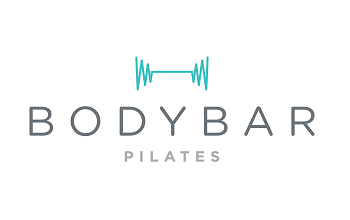🕒 Estimated Reading Time: ~10 minutes

It’s been said that, “Franchising is becoming the preferred pathway to entrepreneurship in the fitness industry. Franchises that have proven that their business model can be a profitable venture are a more attractive prospect for entrepreneurs than establishing a brand from scratch.” If you’re good at developing relationships and passionate about helping people get fit, the fitness franchise industry could be a match for you.
As for the options you have as a prospective fitness franchise owner, they are numerous. Advancements in science, technology, and data collection are leading to more and more ways to deliver fitness services to people, which means more and more people can utilize fitness services. As a result, there is no shortage of areas a prospective franchisee can get into when picking a fitness franchise to own.
“It seems like every other week there’s a new study touting the best way to work out. And, really, how you do it depends a lot on your goal,” says Amy Roberts, a certified personal trainer. “A few specific trends have emerged in recent years regarding working out for general fitness, and more specifically how to elicit the optimal metabolic response—that ‘after burn’ effect of continued calorie consumption for up to 48 hours after a session—e.g., the biggest bang for your effort and time.”
To illustrate the many ways fitness franchises have been created to specialize their services around a highly developed and specialized methodology take Orangetheory Fitness, for example. Its program is inspired by the scientific phenomena of Excess Postexercise Oxygen Consumption (EPOC), the body’s elevated demand for oxygen and prolonged calorie-burning functions that continue even after cardiovascular exercise or weight training has finished.
Another form of segmentation within the industry allows for fitness franchise programs to be tailored to certain demographic groups. One of the biggest fitness demographic segments is kids. Budget cutbacks not only have affected the academic side of education; physical fitness programs also took a hit. Also, parents have discovered the benefits to getting kids active early. But adults haven’t been left out if the trend towards catering to a certain demographic. For instance, there are franchises dedicated to the unique fitness needs of expectant and new moms.
Of course, the original style of segmentation involves what is taught in the class. From yoga to Pilates to MMA to rowing to bootcamps and everything in between, fitness franchises based on specific kinds of exercises have been around for decades.
But to be clear, don’t think the more traditional gym workout is dying out. As the saying goes, “classics never go out of style.” Places that feature weightlifting and cardio such as treadmill running and cycling remain in high demand too.

Gym and Fitness Franchise Industry Outlook
According to market research company IBISWorld, the market size of the gym and fitness franchise industry is $7 billion, as of early 2023. Major franchisors in the industry include Anytime Fitness, F45 Fitness, Jazzercise, Planet Fitness, Orangetheory Fitness, Snap Fitness, and Xponential Fitness.
The following overviews the general outlook for the gym and fitness franchise industry through 2028, barring unforeseen circumstances:
A burgeoning active population will likely lead to an increasingly healthy lifestyle franchises that appeal to time-strapped consumers with convenient establishments, around-the-clock services and up-to-date fitness technology will fare well over the next five years. Gyms that offer meal planning, goal tracking, online personal training and user forums will generate a large customer base. As obesity becomes more prevalent during the outlook period, health ailments, such as type X diabetes and high blood pressure, will increase healthcare costs.
Bouncing Back from the Pandemic
The COVID-19 pandemic caused immediate challenges for businesses across every sector when it emerged. The gym and fitness industry was one of the industries that had to adapt the most.
Now, over three years since the onset of the official pandemic—and shortly after the official governmental declaration marking the end of the resulting public health emergency—the way the world exercises has changed. As a result, so has the way fitness franchises operate. At least generally speaking.
Home workouts have always been popular. But when social distancing became required, a way to operate away from the traditional studio or gym became necessary. Enter the hybrid fitness model.

As Julie Cartwright, president of P.volve, told Global Franchise Magazine, “With a hybrid fitness model, franchisors and franchisees can tap into both facets of this post-pandemic demand and ensure clients are able to achieve their personal health goals regardless of where they want to work out.”
Ideally, the concept allows franchises to build a best of both worlds following. With a hybrid approach, franchisors build out a traditional studio experience while concurrently developing an on-demand platform that customers can access whenever and wherever they want to work out.
And it’s no surprise hybrid is becoming popular. Convenience was already becoming all the rage no matter what industry you operated in. The pandemic only accelerated that consumer desire. “People want to work out in a way that’s convenient to them – they don’t always have time to commute, nor do they want to,” says Cartwright.
But some franchises go to the extreme: No dedicated physical space at all.
Unsurprisingly, franchises such as Send Me A Trainer and GYMGUYZ, which both predate COVID-19 by over a decade, surged in popularity when the pandemic hit. “Home fitness was already popular in recent years and COVID-19 has only accelerated this trend and it is here to stay,” says Send Me A Trainer co-founder Bary El-Yacoubi.
Adds GYMGUYZ Founder and CEO Josh York, “GYMGUYZ’s business model continues to take off with a little extra added bump now that [some] people aren’t comfortable going to the gym, and we’re seizing that opportunity. Everything you hear now is about safety and convenience, and it’s brought a lot more awareness to our brand. Being able to bring the workout to clients when they don’t feel at ease going to the gym has put us in a strong position.”
But it seems we are finding a point of equilibrium between at-home and at location workouts.
At a point, over 50% of people said they’d likely never return to a gym now that they had access to workout equipment at home and digital fitness options. However, after social distancing restrictions began to be lifted, what some in the gym and fitness industry feared the most ended up not becoming as much as an issue. By mid-2021, overall gym traffic had rebounded to 83% of its pre-COVID level by some measures.
In particular, Planet Fitness is one chain that recorded a quick resurgence. In fact, by the start of 2022, the franchise system, one of the largest and most popular, was almost back at 100% membership as compared to its pre-pandemic level. As Planet Fitness CEO Chris Rondeau told CNBC, “I never wavered. Me and my team, the franchisees, we knew once we got on the other side of this, people are going to gravitate back [to gyms],” he said. He added, “We’re definitely stronger now on the other side of this.”
In addition, the pandemic and economic conditions that followed it (e.g., inflation and rising real estate prices) might have ushered in creative thinking regarding where to open fitness franchise locations.
For example, F45 has been seeking opportunities to partner with universities, hospitality operators, corporations, and military facilities. The action, however, isn’t an initiation but rather an acceleration. In 2016, the company first opened a studio on the campus of the University of Southern California. Within five years, it had around 30 studios on U.S. college campuses.
Buying a Fitness Franchise
Game Planning for Your Success
Many former athletes have found that if they relate what made them successful in sport to franchising it smooths over some of the inevitable bumps on the road of business ownership.
Former NFL players David Garrard and Jameel McClain both invested in the Retro Fitness franchise system after their playing days were over, and realized franchising helped them out by giving them more of a “game plan” than other more independent business ventures. When it comes to advice they would give to other franchisees (not just other former athletes), they say:
- Always have a game plan ready for your next move. “There was never a training session, practice or game that I played that didn't involve a game plan,” says Garrard. “My teams, collectively, followed the plan—feeling confident that it would always help us.”
- Be realistic about your capacity to get things done. “You have to be able to run all parts of the business - especially if the people you've asked to help out don't show up,” says McClain.
- Identify your blind spots by listening to more experienced business people. If you want to be successful, “In this business, being hard headed isn't an option,” according to Garrard.

Initial Investment for Fitness Franchises
A good place to find the potential initial investment for a franchise you’re interested in is the franchise disclosure document(FDD) of that brand. The FDD will typically outline the fees associated with starting a particular franchise, along with providing you with a wealth of additional information about that franchise.
Franchisors offer estimates in their FDD based upon their experience establishing, and in some cases operating, units. However, prospective franchisees should remember these estimates are just that—an estimate. Prospective franchisees should review the figures presented with a business advisor, taking into consideration their unique circumstances, before entering into a franchise agreement.
In general, investment costs vary for different franchises depending on the particular business system and execution requirements. Initial costs associated with opening a franchise include the franchise fee, training expenses (such as travel and living expenses, not the actual training courses), grand opening marketing costs, and more.
One major variable in the initial franchise investment is the cost of real estate. Some fitness franchises, such as Planet Fitness and Gold’s Gym, require a much more expansive build out in comparison to other franchises. Furthermore, there are fitness franchises such as GYMGUYZ and Jazzercise that can operated as a mobile franchise with the franchisee’s home as the base. The latter will, obviously, cost less to start.
Ongoing Fees
In addition to what you spend to start, there are several expenses required for the successful maintaining of a business. There are also a number of ongoing fees that are specific to being a part of the franchise system.
The most common is the royalty fee. Royalty fees are assessed for the continued use of the franchisor’s trademarks and patented processes, along with certain types of operational support. In addition to regularly assessed fees, other fees are charged on an “as needed” basis such as audit fees, or costs for additional, non-mandatory, training.
It’s important to note that while many initial and ongoing costs are detailed in the FDD, there are some costs inherent to business ownership, like employee wages or utility costs, that aren’t.
Ready to whip your career into shape? Browse our listing of top fitness franchises available now!
Hottest Fitness Franchises

D1 Training
Skip the big-box chains and choose our winning franchise, where average membership rosters run between 200 and 300 clients.

BODYBAR Pilates
Don’t miss out on the chance to invest in your future and your community by being a BODYBAR Boss!

Fit Body Boot Camp
More than just a fitness franchise. A high-profit, scalable gym franchise driven by impact.














